AI based tool for music generation
The design process for the Dhun app was complex, requiring a deep understanding of the music industry. Firstly, we conducted extensive user research to understand how music producers compose and create music. We interviewed various music producers in studios to gain insights into their workflows and identify ways to simplify them. We also examined other LLM models available in the market.
Once we had our answers, we divided our model into four parts: text to music, music to melody variation, text to sound effects and foley, and hum to music. All these features were dependent on the LLM model.
Consequently, we created the DAW (Digital Audio Workspace), where users can create samples and variations using the LLM and develop new tracks using the same interface.
AI based tool for music generation
The design process for the Dhun app was complex, requiring a deep understanding of the music industry. Firstly, we conducted extensive user research to understand how music producers compose and create music. We interviewed various music producers in studios to gain insights into their workflows and identify ways to simplify them. We also examined other LLM models available in the market.
Once we had our answers, we divided our model into four parts: text to music, music to melody variation, text to sound effects and foley, and hum to music. All these features were dependent on the LLM model.
Consequently, we created the DAW (Digital Audio Workspace), where users can create samples and variations using the LLM and develop new tracks using the same interface.
AI based tool for music generation
The design process for the Dhun app was complex, requiring a deep understanding of the music industry. Firstly, we conducted extensive user research to understand how music producers compose and create music. We interviewed various music producers in studios to gain insights into their workflows and identify ways to simplify them. We also examined other LLM models available in the market.
Once we had our answers, we divided our model into four parts: text to music, music to melody variation, text to sound effects and foley, and hum to music. All these features were dependent on the LLM model.
Consequently, we created the DAW (Digital Audio Workspace), where users can create samples and variations using the LLM and develop new tracks using the same interface.
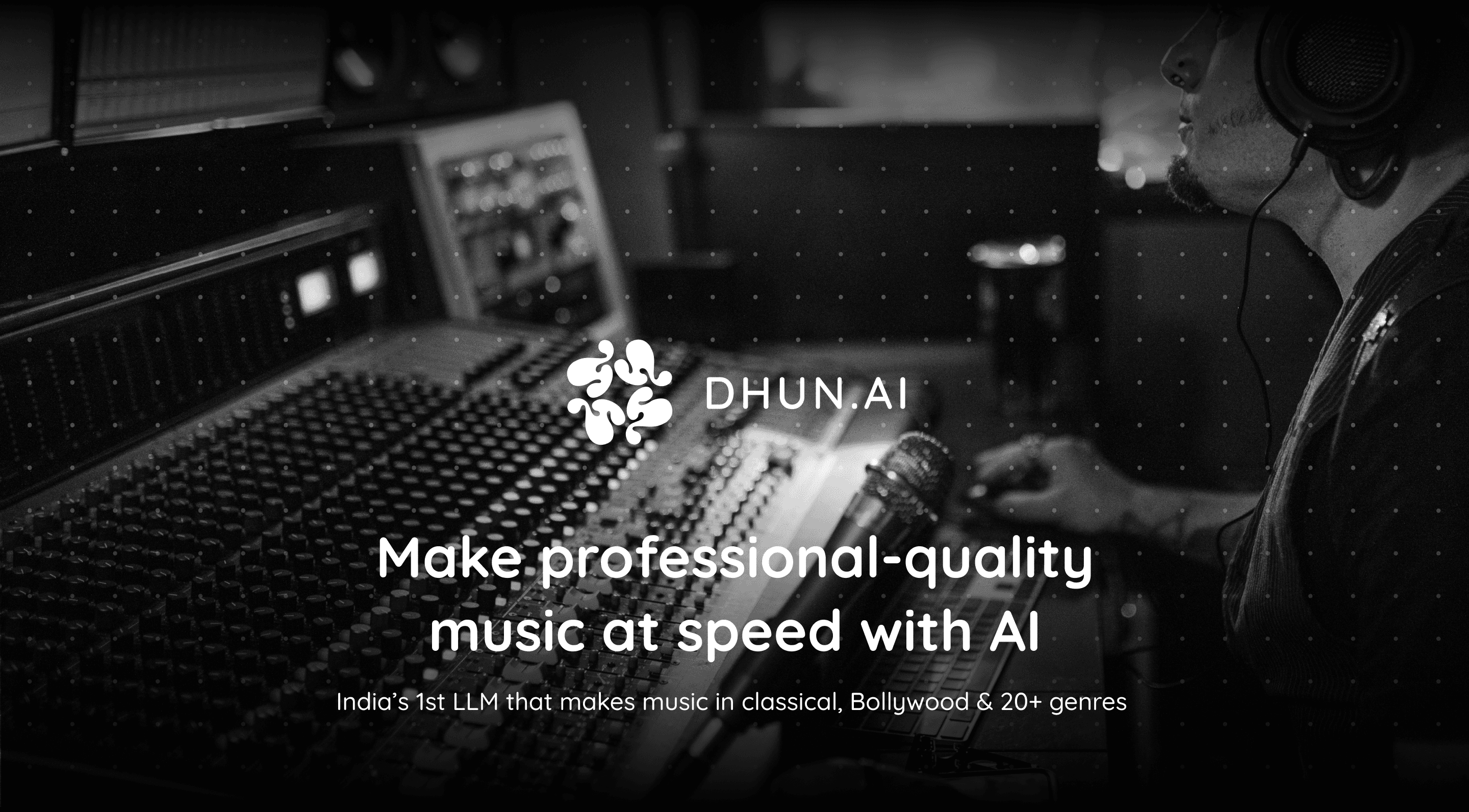


Process
The design process for the Dhun app was complex, requiring a deep understanding of the music industry. Firstly, we conducted extensive user research to understand how music producers compose and create music. We interviewed various music producers in studios to gain insights into their workflows and identify ways to simplify them. We also examined other LLM models available in the market.
Once we had our answers, we divided our model into four parts: text to music, music to melody variation, text to sound effects and foley, and hum to music. All these features were dependent on the LLM model.
Consequently, we created the DAW (Digital Audio Workspace), where users can create samples and variations using the LLM and develop new tracks using the same interface.
Process
The design process for the Dhun app was complex, requiring a deep understanding of the music industry. Firstly, we conducted extensive user research to understand how music producers compose and create music. We interviewed various music producers in studios to gain insights into their workflows and identify ways to simplify them. We also examined other LLM models available in the market.
Once we had our answers, we divided our model into four parts: text to music, music to melody variation, text to sound effects and foley, and hum to music. All these features were dependent on the LLM model.
Consequently, we created the DAW (Digital Audio Workspace), where users can create samples and variations using the LLM and develop new tracks using the same interface.
Process
The design process for the Dhun app was complex, requiring a deep understanding of the music industry. Firstly, we conducted extensive user research to understand how music producers compose and create music. We interviewed various music producers in studios to gain insights into their workflows and identify ways to simplify them. We also examined other LLM models available in the market.
Once we had our answers, we divided our model into four parts: text to music, music to melody variation, text to sound effects and foley, and hum to music. All these features were dependent on the LLM model.
Consequently, we created the DAW (Digital Audio Workspace), where users can create samples and variations using the LLM and develop new tracks using the same interface.
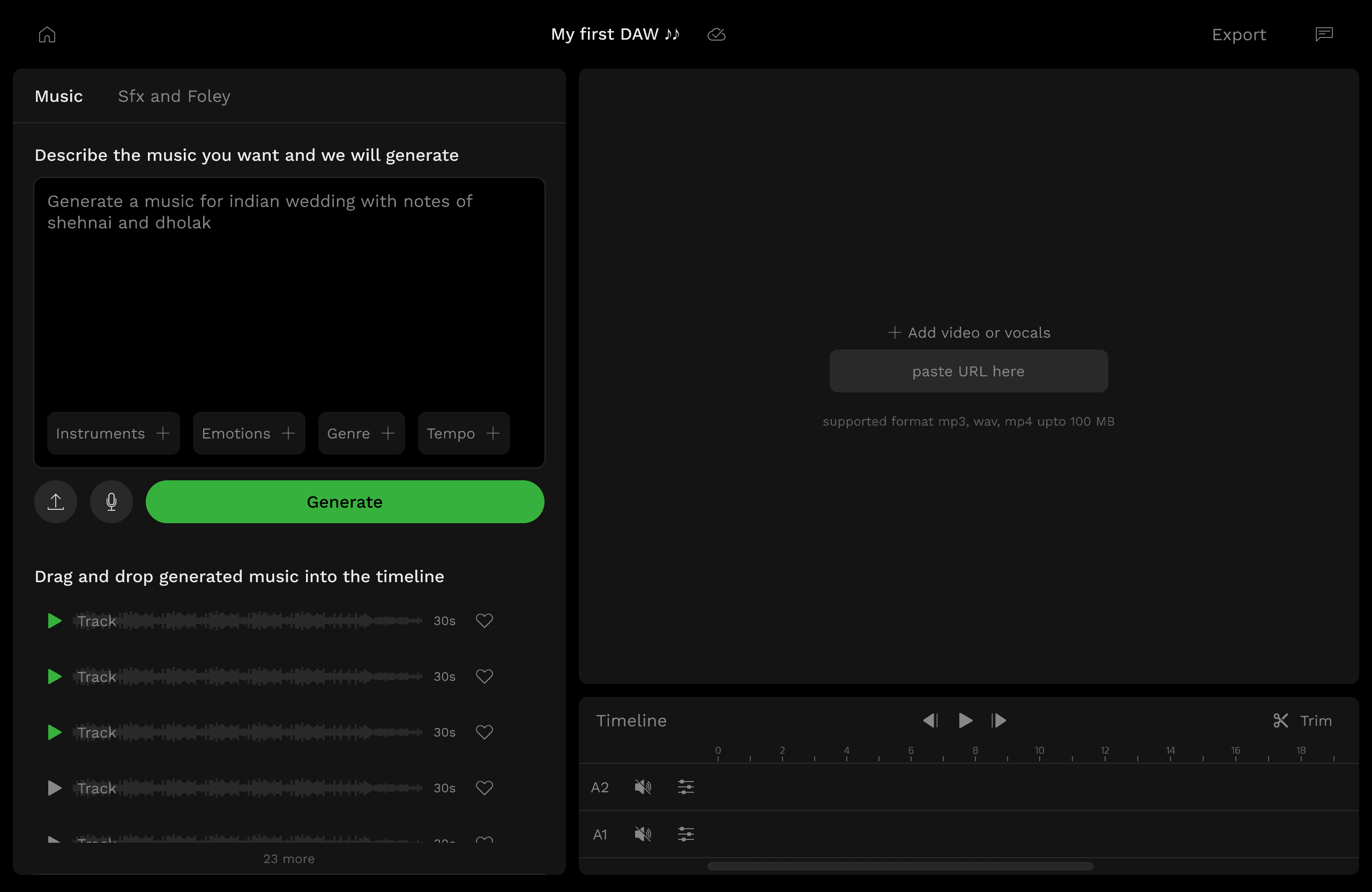


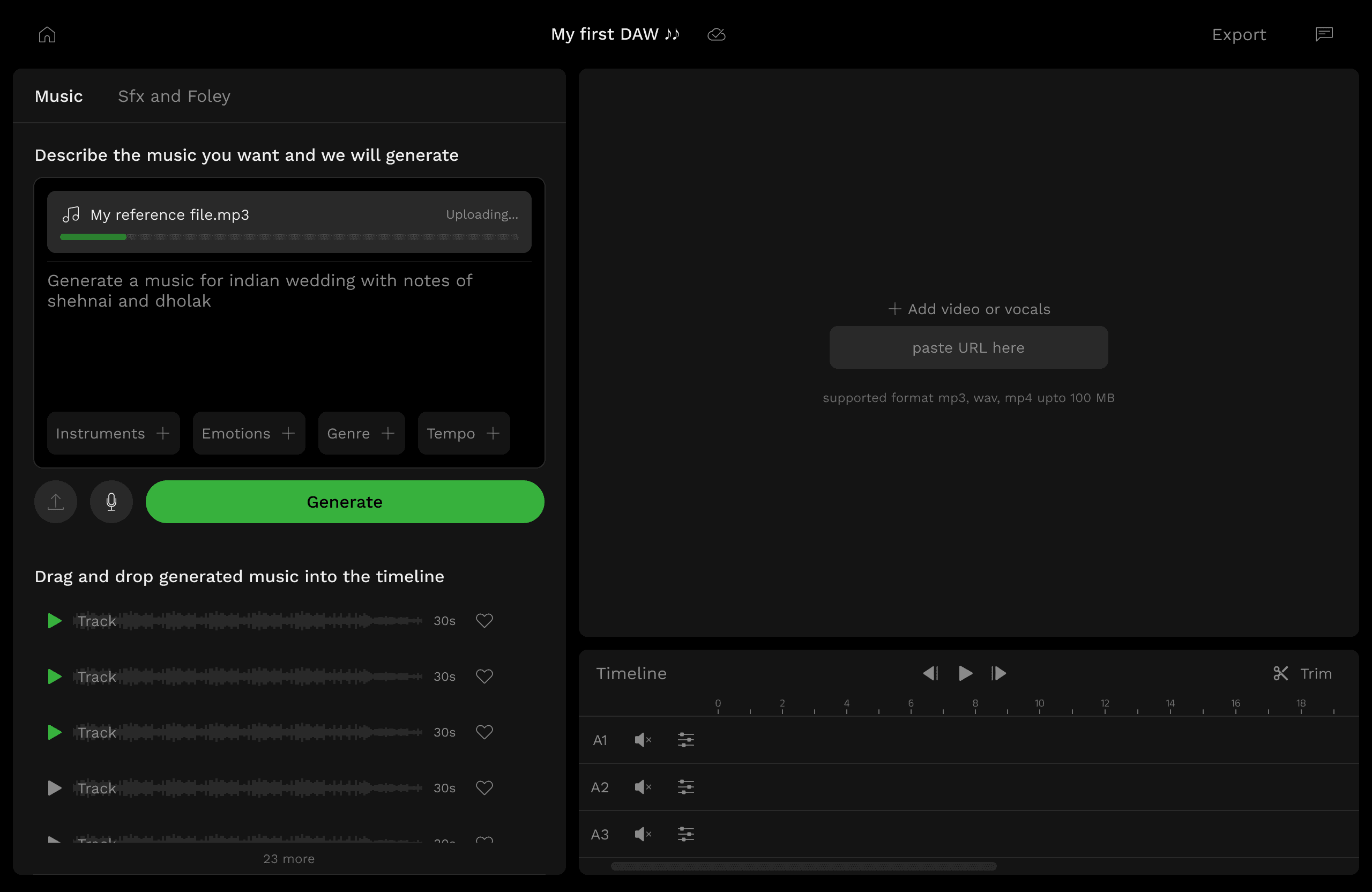


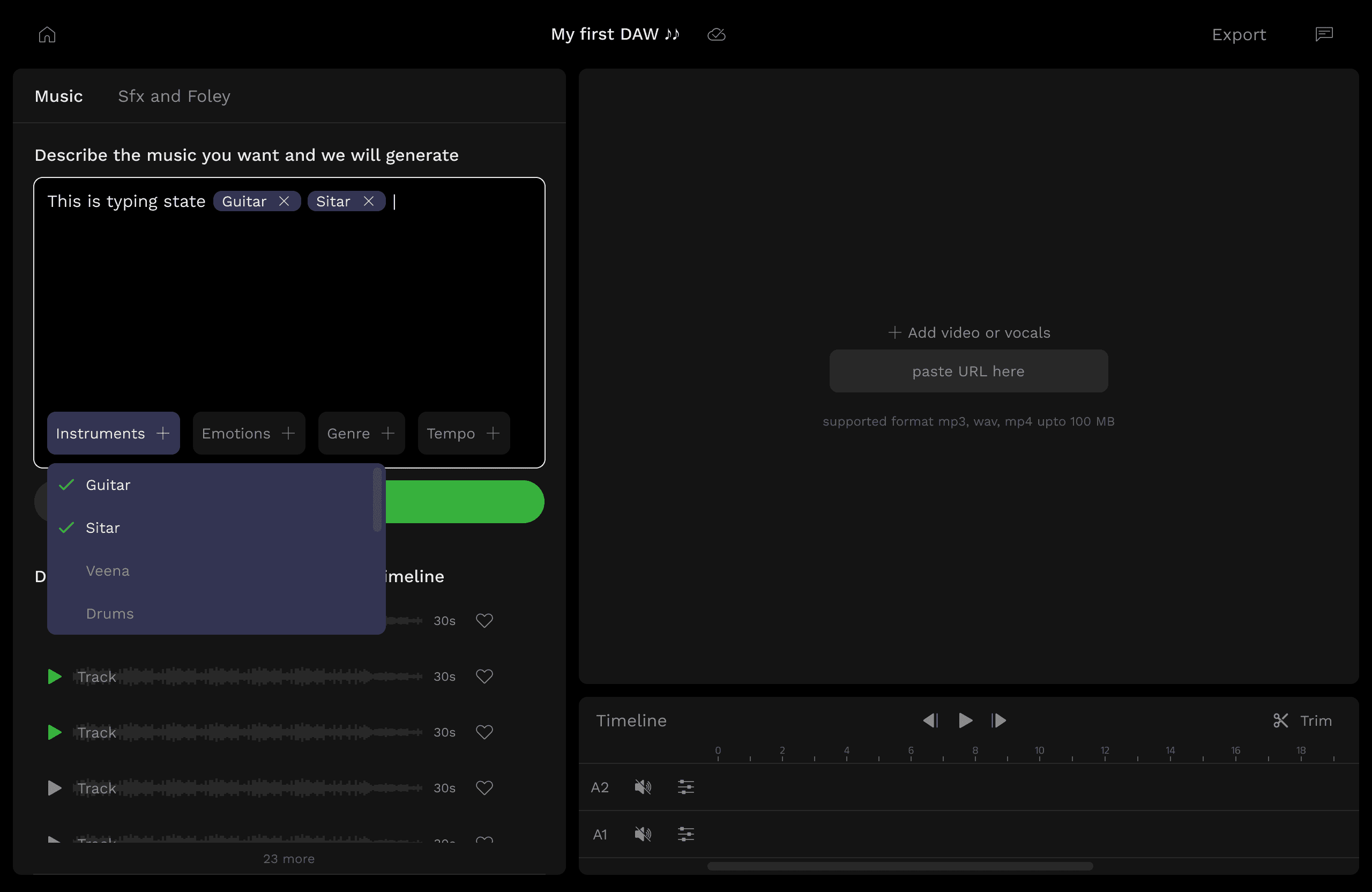


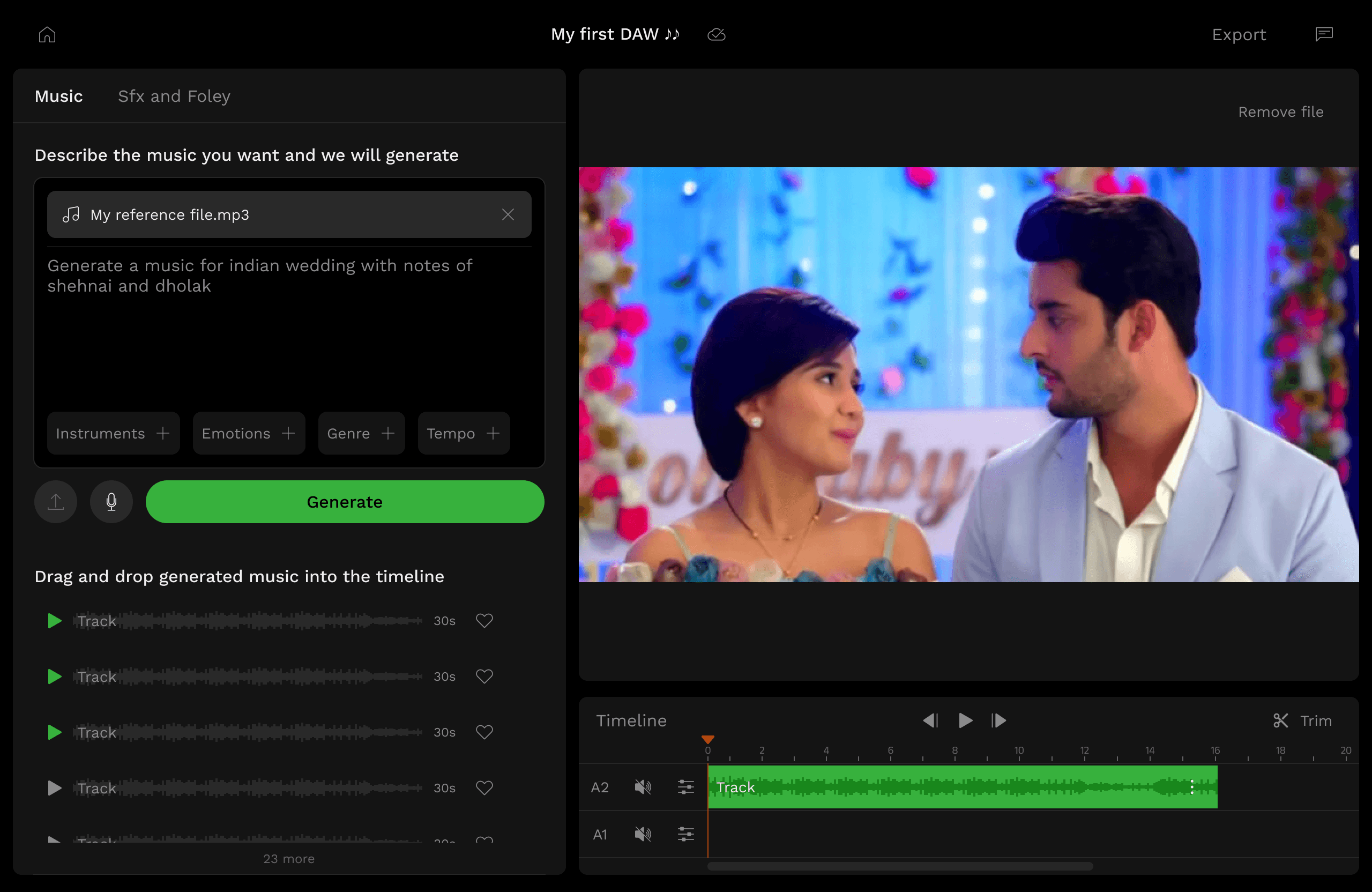


Outcome
The final outcome allowed users to create music, music variations, and effects simply by inputting text. They could effortlessly create, sample, edit, and export tracks, streamlining the entire music production process. The intuitive interface and advanced features provided users with the flexibility to experiment and innovate with their sound, catering to both novice and experienced musicians. This product significantly reduced their workflow by 50%, enabling them to focus more on creativity and less on technicalities. As a result, users were able to produce high-quality music more efficiently and effectively, enhancing their overall experience and productivity.
Outcome
The final outcome allowed users to create music, music variations, and effects simply by inputting text. They could effortlessly create, sample, edit, and export tracks, streamlining the entire music production process. The intuitive interface and advanced features provided users with the flexibility to experiment and innovate with their sound, catering to both novice and experienced musicians. This product significantly reduced their workflow by 50%, enabling them to focus more on creativity and less on technicalities. As a result, users were able to produce high-quality music more efficiently and effectively, enhancing their overall experience and productivity.
Outcome
The final outcome allowed users to create music, music variations, and effects simply by inputting text. They could effortlessly create, sample, edit, and export tracks, streamlining the entire music production process. The intuitive interface and advanced features provided users with the flexibility to experiment and innovate with their sound, catering to both novice and experienced musicians. This product significantly reduced their workflow by 50%, enabling them to focus more on creativity and less on technicalities. As a result, users were able to produce high-quality music more efficiently and effectively, enhancing their overall experience and productivity.